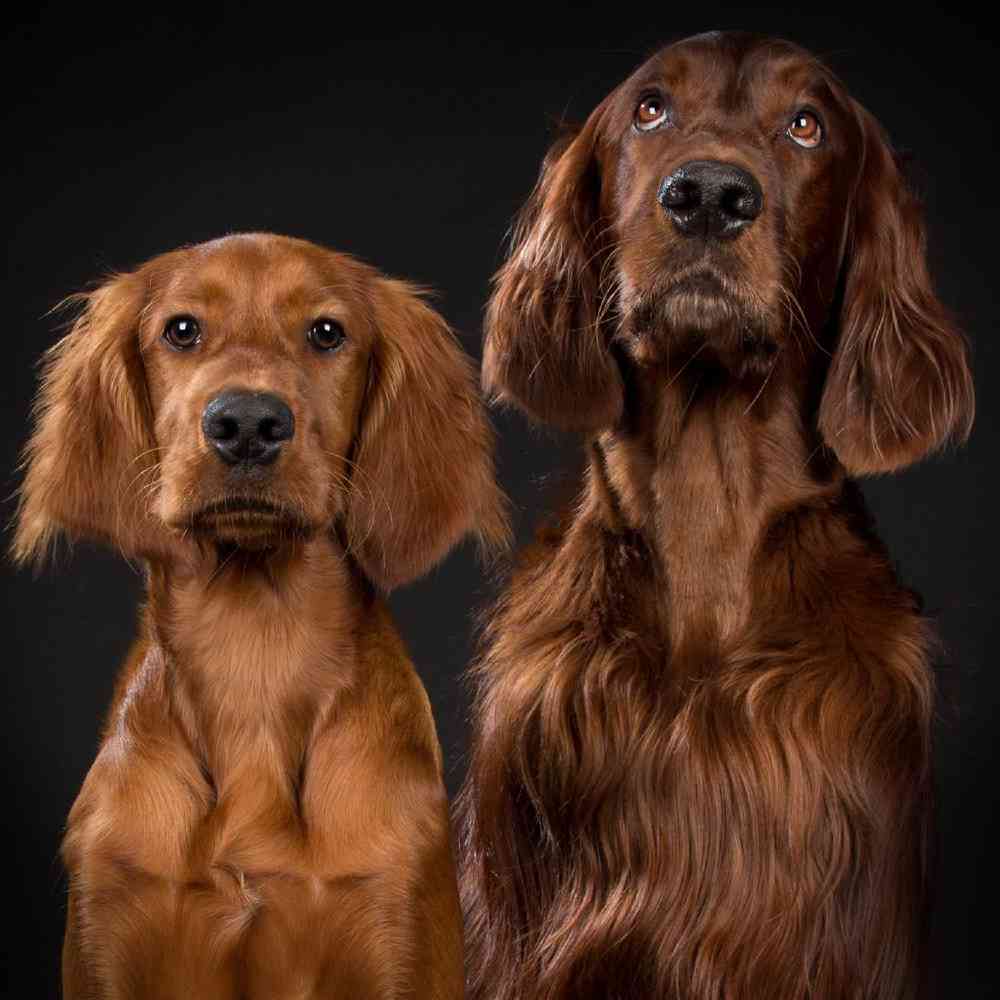Select store
Irish Setter

The Irish Setter is a high-spirited gundog known for grace, swiftness, and a flashy red coat. They are famously good family dogs: sweet-tempered companions for the folks, and rollicking playmates and tennis-ball fetchers for the children.

Want to know more about Irish Setter ?
Breed Traits
Group
Sporting
About
History
Standard
Nutrition
Grooming
Exercise
Training
Health
General Appearance
The Irish Setter is an active, aristocratic bird dog, rich red in color, substantial yet elegant in build. Standing over two feet tall at the shoulder, the dog has a straight, fine, glossy coat, longer on ears, chest, tail and back of legs. Afield, the Irish Setter is a swiftmoving hunter; at home, a sweet natured, trainable companion. At their best, the lines of the Irish Setter so satisfy in overall balance that artists have termed it the most beautiful of all dogs. The correct specimen always exhibits balance, whether standing or in motion. Each part of the dog flows and fits smoothly into its neighboring parts without calling attention to itself.


